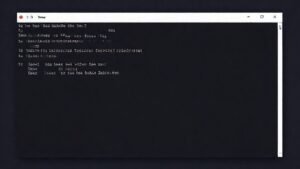Łódź Ghetto history Unveiled: From Confinement to Industrial War Engine
- THE MAG POST

- Aug 27
- 13 min read

Origins and Occupation Shocks
In the earliest stages of the war, Łódź Ghetto history is written in orders and streets sealed off by barbed wire and gunpowder caution. The city’s demographic mosaic, already diverse, was abruptly subordinated to a plan aimed at cleansing and reordering a conquered region. The ghetto emerged not merely as a place of confinement but as a new administrative project designed to extract labor and obedience from those confined within its borders. The first decrees framed a chilling vision: to relocate and isolate, to make the urban fabric serve a brutal industrial agenda.
Origins and Population Shifts
The initial population of the ghetto grew rapidly as the authorities consolidated control, drawing in Jews from nearby towns and beyond. The process was systematic, with streets narrowed, homes repurposed for collective living, and pedestrian traffic regulated by police battalions. This was not merely a relocation; it was a reconfiguration of daily life under a totalizing regime. Families that once shared kitchens and courtyards found themselves crammed into a compact zone where scarcity and fear dictated every purchase and every conversation.
As the ghetto solidified, Łódź Ghetto history records a doubling down on the demand for efficiency and surveillance. Residents were organized into workshops and, increasingly, into labor cohorts that would come to feed the German war effort. The social fabric frayed under stress, yet people improvised—creating schools, cultural spaces, and social networks that helped sustain a sense of community. The human cost of the early consolidation was visible in the rising numbers of deportations and the widening gap between those who controlled resources and those who endured deprivation.
Initial Orders and Restrictions
Administrative decrees established a framework that tightly constrained movement, commerce, and contact with the outside world. The ghetto was not a separate city block but a self-contained status quo, where the yellow badge and confiscation of property signaled the totality of control. The Orpo police and reserve battalions acted as the enforcers of a policy aimed at depopulation through forced labor, while the Judenrat emerged as a controversial organ tasked with implementing Nazi directives from within the community itself. The stage was set for a grim symbiosis of coercion and complicity that would shape the coming years.
Across days and weeks, prohibitions multiplied: contact with non-Jewish neighbors, exchange of currency, and even casual movement were policed to the point of existential claustrophobia. Rumors swirled about the outside world, feeding both fear and a glimmer of defiant hope. Yet the practical effect was immediate: food distribution, medical supplies, and essential services were funneled through a system designed to keep the population from organizing in any meaningful, unified way. The authorities framed these measures as necessary for security, while the residents learned to navigate a landscape where every interaction carried risk.
From Containment to Industrial Engine
A striking turn in Łódź Ghetto history is the transformation from a containment zone into a sprawling industrial complex that powered a war machine. The shift reframed confinement as production, with workshops and labor camps pulsing at the heart of the ghetto. It was a bold, brutal recalibration: survival depended on productivity, and the German authorities leveraged this logic to sustain military operations while masking the human toll behind the machinery of manufacture.
Industrial Transformation Under Rumkowski
Chaim Rumkowski, a controversial figure, became the architect of converting deprivation into output. He positioned labor as the sole path to “survival,” compelling long hours and rationed sustenance to maximize production. The ghetto’s workshops produced uniforms, equipment, and tools for the Wehrmacht, turning a captive population into a critical supply line. This industrial pivot reshaped daily routines, with workers enduring brutal schedules and substandard nutrition as a grim standard of living.
Under this system, the ghetto gained a functional identity as a self-contained economy. Departments expanded and specialized, driven by state directives and the central bureau of labor. The claim of productivity as a shield against extermination became a narrative that trapped many residents in a cycle of work and deprivation. The economic logic, while enabling some degree of resilience, also intensified the moral complexity of Rumkowski’s leadership, making the question of resistance more nuanced than outright rebellion.
Labor System and Economic Control
The labor apparatus was organized with brutal efficiency, and the daily routine shifted from mere subsistence to the cadence of production lines. Workers endured long hours, low wages, and minimal breaks, yet the output sustained not only the German war effort but also a fragile internal economy. The ghetto currency, known as the ghetto mark, functioned as an isolated monetary system that restricted external trade and reinforced a closed loop of exchange. Within this framework, the line between employer and state authority blurred, and the right to food and medicine often rested on one’s position in the production chain.
With the centralization of labor, the ghetto acquired new social hierarchies. Some groups gained better access to scarce resources, while others faced harsher penalties for minor infractions. Strikes and protests, although risky, began to surface as the population assessed the cost of escalating hunger against the supposed security of continued employment. The tension between necessity and morality defined the economic life of Łódź Ghetto history, highlighting how industrial instrumentalism could reshape human relations under coercive rule.
Łódź Ghetto history : Living Conditions and Daily Struggles
Łódź Ghetto history is inseparable from the daily realities of hunger, disease, and extreme crowding. The living conditions reflected a calculated denial of basic dignity, with ration systems and supply routes that often fell short of sustenance. Yet even within this harsh environment, people built social rituals, cultural life, and informal networks that provided a counterweight to deprivation. The narrative shifts between grim statistics and intimate moments of resilience and solidarity.
Nutrition, Starvation, and Health
Average daily intake hovered around critically low levels, leaving many residents malnourished and vulnerable to disease. The paucity of protein and calories translated into physical decline and a heightened susceptibility to tuberculosis and other infections. Yet communities devised practical strategies for stretching food, sharing scarce resources, and preserving family ties in the face of continual risk. The struggle to obtain even minimal nutrition often dictated choices about labor, housing, and care for the sick.
Access to medicines and medical care was tightly controlled, compounding the health crisis. Hospitals existed, but supplies were scarce, and overcrowding worsened prognosis. In this milieu, individual stories of caregiving, improvisation, and quiet endurance emerged, painting a broader portrait of life inside the ghetto beyond the statistics of death and deportation. The health crisis underscored the lethal fragility of survival under a regime that viewed people as units of labor rather than human beings.
Overcrowding and Housing
The ghetto’s footprint was cramped into a few square kilometers, with tens of thousands of people squeezed into a limited area. Overcrowding accelerated the spread of disease and amplified tensions among residents, as families battled for space and warmth during harsh winters. The urban environment itself became a pressure cooker, with housing conditions reflecting the broader policy of deprivation and control. The physical landscape—walls, streets, and shared courtyards—gradually defined social experience in the ghetto.
Living quarters were paired with a strict regime of movement and surveillance. The architecture of confinement extended into everyday life: queues for food, restricted access to public spaces, and the constant presence of German policing. Yet the resilience of residents manifested in communal kitchens, improvised nurseries, and the creation of safe havens where children could learn, play, and dream in small, precious ways despite the surrounding peril.
Administrative Power and Rivalries
Administrative power within the ghetto unfolded through a tense choreography of German oversight and local self-government. The Judenrat, led by Chaim Rumkowski during critical years, wielded extraordinary authority that would prove deeply controversial. Meanwhile, the German Amtsleiter and the Gettoverwaltung directed day to day operations, shaping policies that balanced control with the imperative to sustain labor production. In this ecosystem, leadership, loyalty, and pragmatism collided under the pressure of a genocidal regime.
Judenrat Leadership and Rumkowski
The Judenrat held formal responsibility for maintaining order, distributing resources, and managing industrial output, all under the threat of brutal punitive measures. Rumkowski, often addressed as a controversial figure, embodied the paradox at the heart of the ghetto’s administration: his policies aimed at survival through productivity, yet they intensified deprivation and sparked resistance within the population. His leadership style, described as autocratic by many observers, became a focal point for debates about collaboration, resistance, and the moral costs of survival.
Rumkowski’s rhetoric and policy decisions produced a complex legacy. While some credited him with keeping thousands alive through organized labor, others argued that his tactics sacrificed younger and stronger generations for short-term gains. The internal tensions within the ghetto’s leadership mirrored the broader geopolitical pressures of the time, revealing how power relations can become a critical determinant of fate in such dire circumstances.
Ghetto Administration and Corruption
Administrative structures evolved rapidly, with Gettoverwaltung expanding as the scale of operations grew. The bureaucracy often blurred lines between public provisioning and private gain, as officials and business figures leveraged their positions for personal enrichment. The interplay of corruption and necessity complicated life for ordinary residents who depended on these channels for food, medicine, and shelter. The ghetto’s management thus became a study in the paradox of organized oppression and survival economics.
Within this environment, the economic and administrative machinery sometimes undermined the best interests of those it aimed to serve. Debates over resource allocation, favoritism, and bribery highlighted the fragility of any system that relies on coercion. Yet amid these tensions, residents found ways to improvise, form solidarities, and seek equitable access to scarce essentials, illustrating the multifaceted reality of governance under extreme duress.
The Currency and Economic Isolation
Łódź Ghetto history records the emergence of a distinct currency system designed to insulate the ghetto’s economy from the outside world. The ghetto mark, known informally as rumki or chaimki, replaced conventional currency and functioned solely within the walls. This economic isolation reinforced a closed loop of exchange, while prohibiting the use of more widely accepted currencies outside the ghetto. The currency became a symbol of autonomy within captivity and a tool of control for those managing daily life.
Ghetto Currency and Economic Isolation
The introduction of the ghetto currency was more than a financial artifact; it was a strategic measure that constrained trade and rationing. It facilitated the selective distribution of goods, allowing the authorities to reward compliance and penalize dissent. For residents, it meant learning a new economic grammar, where price signals and shortages dictated choices about work, bread, and medicine. The currency’s distinct value within the ghetto underlined the stark disconnect between the confined community and the broader German-occupied economy.
Economic isolation also meant that most external barter or smuggling became nearly impossible, given the heavy security and the pervasive fear of punishment. In this environment, the population learned to maximize the utility of scarce resources through mutual aid networks, shared kitchens, and informal exchange systems that operated under the watchful eyes of both German police and internal authorities. The currency thus became a microcosm of life under occupation, illustrating both adaptation and the constraints imposed on every purchase and decision.
Trade and Black Market Realities
Despite strict controls, informal trade and barter persisted as a lifeline for many households. Smuggling networks, though fragile, linked the ghetto to surrounding areas, enabling families to obtain food, clothing, and essential items that official channels could not supply. These activities carried high risk, yet the human instinct to provide for one’s family drove people to seek means to survive beyond the official rationing system. The black market in the ghetto was a testament to resilience in the face of almost unimaginable scarcity.
However, the German authorities responded with escalating penalties and punitive measures to deter illicit exchanges. The tension between necessity and risk created a climate where even seemingly minor infractions could trigger severe consequences. The precarious balance between survival and compliance defined daily life, shaping how residents navigated fear, trust, and communal responsibility within the tightly controlled economy of Łódź Ghetto history.
Cultural Life and Small Victories
Even within the brutal framework of confinement, Łódź Ghetto history bears witness to a vibrant cultural life that sustained identity and hope. The ghetto fostered schools, theaters, concerts, and religious observances that offered moments of dignity and humanity. Cultural activities served not merely as entertainment but as a form of quiet resistance, a way to preserve memory, faith, and community against the dehumanizing pressures of daily life. These cultural spaces became a counterweight to the regime’s attempts at erasure.
Education and Cultural Life
Educational initiatives and cultural programs proliferated despite scarcity. Schools, libraries, and theaters provided a forum for learning, expression, and the exchange of ideas. Performances and artistic gatherings offered solace and a sense of normalcy, forging bonds among residents who shared a common struggle. The cultural life of the ghetto manifested as a disciplined, creative response to oppression, creating a durable memory that outlived the confinement itself.
Artists, writers, and musicians used these spaces to document experiences, question authority, and celebrate resilience. The ghetto archives and the work of photographers captured intimate scenes of daily life, adding a powerful layer of testimony to the historical record. Cultural activities thus became a tool for preserving humanity under extraordinary pressure, ensuring that even in captivity, the human urge to create endures.
Resistance and Symbolic Defiance
Resistance within the ghetto took many forms, from organized labor slowdowns to clandestine education and cultural preservation. Symbolic acts—banished religious gatherings, forbidden theaters, and secret libraries—served as quiet but persistent refusals to surrender identity. The specter of armed resistance remained a constant possibility, yet the practical realities of security and control often redirected defiance into more subtle channels that preserved dignity while avoiding fatal confrontations.
The role of the Judenrat and the internal debates about survival versus resistance illustrate the complexity of opposition within the ghetto. Some groups sought to safeguard life through compliance with production targets, while others urged a more confrontational stance. The tension between these impulses reveals the moral ambiguity of resistance under totalitarian occupation, where even acts of self-preservation could be perceived as resistance by future generations.
Deportations and the Final Solution
The culmination of Łódź Ghetto history is inseparable from the deportations that moved thousands toward extermination. Beginning with mass transports to Chełmno and later to Auschwitz, this phase marks a brutal intensification of the Nazi project. The ghetto’s leadership and the central authorities wrestled with the grim calculus of deportation, often presenting it as a necessary step for survival while erasing the humanity of those forced to leave behind families, homes, and futures. The timeline is a haunting ledger of loss and coercion.
Deportations to Chełmno and Auschwitz
In the autumn of 1941 and into 1942, the pace of deportations accelerated, transforming the ghetto into a staging ground for mass murder. The initial groups were selected involuntarily, with thousands taken from their living quarters and transported to Chełmno, where gas vans and later cremation operations signaled the final, irreversible route to death. The brutal reality of these transports became clear to the inhabitants as they watched loved ones vanish, underscoring the cold calculus of “work or perish” that defined the period.
As the operation expanded, more people were sent to Auschwitz and other camps, with a grim estimate that tens of thousands perished in the process. The ghetto’s population dwindled as the transports continued, while the social networks and cultural life forged under siege dissolved. The deportations left a hollowed community, a landscape of empty rooms and silent streets, and a memory that would haunt survivors and historians for generations.
Kinder KZ and Polish Child Camps
Among the most harrowing episodes were the Kinder KZ camps, where Polish children endured their own brutal ordeals adjacent to the main ghetto. These facilities housed orphans and youths who faced demanding labor, starvation rations, and harsh conditions. The separation of children from families underscored the total reach of Nazi policy and the fragility of communities under occupation. The presence of these camps within the broader system of confinement reveals the cold calculus of demographic engineering in wartime Poland.
Children in these camps experienced a life defined by deprivation, with limited access to water, heat, hygiene, or education. Guards enforced discipline with brutality, and the long days of work were coupled with the trauma of separation from parents and siblings. The Kinder KZ episodes remain among the most painful aspects of Łódź Ghetto history, a stark reminder of how children bore the brunt of violent policies designed to annihilate entire families and communities.
Endgame and Liquidation
By 1944 the fate of the Łódź Ghetto history was sealed as Himmler and other Nazi leaders pushed for complete liquidation. Transports to Chełmno and other death centers intensified, and the ghetto’s own structures were dismantled or repurposed for mass deportations. As the front advanced, organizers sought to transfer remaining labor to other regions, while the last pockets of resistance and culture dissolved under the pressure of annihilation. The end came with the arrival of Soviet forces and the grim realization that most survivors had been uprooted or murdered.
Liquidation and Last Transports
From mid-1944 onward, the German plan shifted toward final removal, with a series of transports aimed at concentrating the remaining population for extermination or transfer to death camps. The liquidation process accelerated as the Allies closed in, and the ghetto’s boundaries were redrawn to exclude Jewish presence. In the chaos of retreat and collapse, testimonies gather from those who witnessed the last trains departing and the streets emptied of their former inhabitants, leaving behind a landscape haunted by memory and loss.
The close of Łódź Ghetto history arrived with the destruction of infrastructure, the expulsion of last survivors, and the grim confirmation that thousands of people would not return. The Soviet advance and subsequent liberation captured a slice of time when a city once alive with trade, culture, and labor had become a silent monument to atrocity. The legacy endures in the stories of survivors, scholars, and communities remembering what happened, and warning future generations against repeating such horror.
Legacy and Remembrance
Memorials, survivor testimonies, and scholarly work ensure that Łódź Ghetto history remains a central chapter in Holocaust memory. The city’s Survivors Park and other commemorative sites serve as living reminders of what occurred and why memory matters. The stories of those who resisted, endured, and aided others enrich the broader narrative of resilience amid catastrophe, transforming personal sorrow into collective memory that informs present-day ethics and education.
Survivors and Memorialization
Survivors and their families have contributed to public memory through testimonies, diaries, and commemorative projects. The archive of Henryk Ross, which preserves a photographic record of daily life, stands as a crucial visual document that helps audiences grasp the scale and intimacy of the ghetto experience. Memorial initiatives, including parks and museums, anchor memory in physical space and invite new generations to confront the past with honesty and humility.
The broader legacy of Łódź Ghetto history also informs education, research, and cultural dialogue. As scholars reexamine the period, they highlight the complexities of leadership, resistance, and survival. The memory of those who perished drives ongoing investigations into genocide prevention, human rights, and the responsibilities of communities to safeguard dignity in the face of oppression.
Key Takeaways from Łódź Ghetto History
Łódź Ghetto history illuminates how confinement, exploitation, and storytelling intersect in a single, devastating chapter of human history. The ghetto’s transformation into an industrial hub reveals how coercive systems weaponize labor and space, while cultural life and education demonstrate resilience even under extreme duress. The narrative also underscores the moral ambiguity of leadership, the fragility of resistance, and the power of memory to counteract forgetting, ensuring that the lessons endure for generations to come.
The Final Reflection
Ultimately, the Łódź Ghetto history teaches that memory is not a passive act but a collective commitment to preventing repetition of atrocity. The survivors’ voices, the archival evidence, and the commemorative efforts form a mosaic that challenges present and future societies to confront cruelty, protect human dignity, and uphold remembrance. By acknowledging both the brutality and the humanity that persisted, we honor those who endured and strengthen our resolve to safeguard rights and dignity for all. This is the enduring call of Łódź Ghetto history.
Topic | Key Insight |
Origins and Occupation | Ghetto established after invasion; tight control, early isolation, and planning for Warthegau |
Industrial Transformation | Ghetto becomes major labor hub supplying war matériel to the Wehrmacht |
Daily Life | Starvation, disease, overcrowding; survival relies on rationing and informal networks |
Administration | Judenrat leadership, Biebow and Gettoverwaltung; complex power dynamics |
Currency and Economy | Ghetto currency isolates internal economy and controls exchange |
Deportations | Chełmno and Auschwitz transports; Kinder-KZ camps illustrate child tragedy |
Cultural Life | Schools, theaters, and archives as forms of resistance and memory |
Endgame | Liquidation, mass deportations, and the front’s approach determine final fate |
From our network :
Optimizing PostGIS Spatial Joins for Faster Geospatial Analysis
China’s Ambitious Space Program: From Lunar Stations to Habitable Planets
China’s Shijian-19 Satellite Returns to Earth After Space Breeding Experiments
Agnikul Successfully Launches SOrTeD and Achieves Milestones in Indian Space Sector






















































Comments